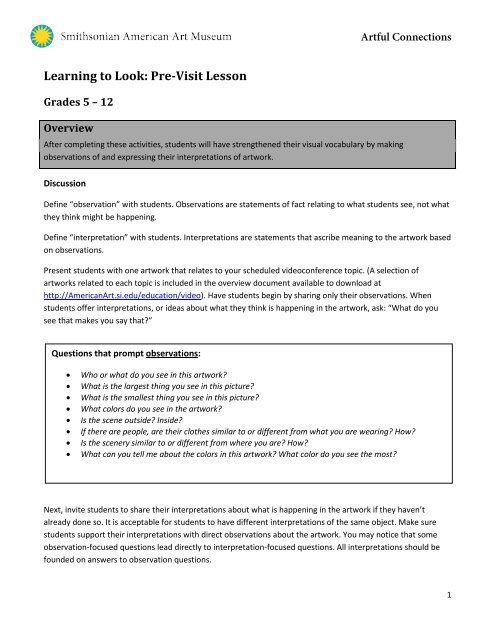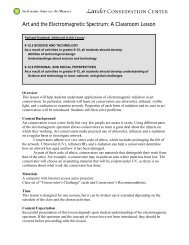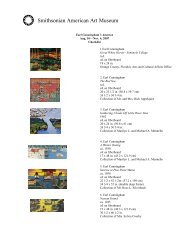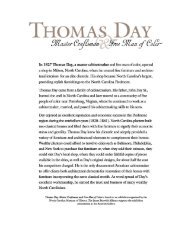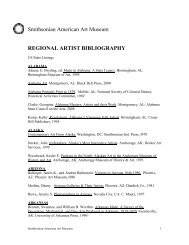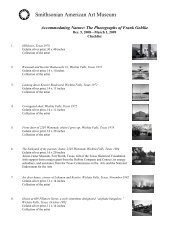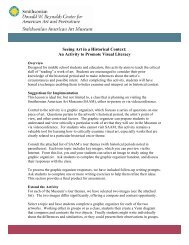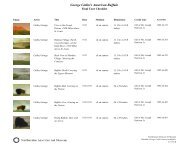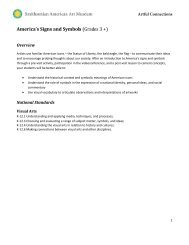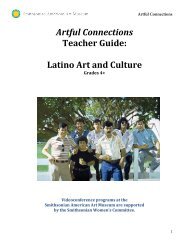Contemporary Craft: Clay Works - Smithsonian American Art ...
Contemporary Craft: Clay Works - Smithsonian American Art ...
Contemporary Craft: Clay Works - Smithsonian American Art ...
You also want an ePaper? Increase the reach of your titles
YUMPU automatically turns print PDFs into web optimized ePapers that Google loves.
<strong>Art</strong>ful Connections<br />
Learning to Look: Pre-Visit Lesson<br />
Grades 5 – 12<br />
Overview<br />
After completing these activities, students will have strengthened their visual vocabulary by making<br />
observations of and expressing their interpretations of artwork.<br />
Discussion<br />
Define “observation” with students. Observations are statements of fact relating to what students see, not what<br />
they think might be happening.<br />
Define “interpretation” with students. Interpretations are statements that ascribe meaning to the artwork based<br />
on observations.<br />
Present students with one artwork that relates to your scheduled videoconference topic. (A selection of<br />
artworks related to each topic is included in the overview document available to download at<br />
http://<strong>American</strong><strong>Art</strong>.si.edu/education/video). Have students begin by sharing only their observations. When<br />
students offer interpretations, or ideas about what they think is happening in the artwork, ask: “What do you<br />
see that makes you say that?”<br />
Questions that prompt observations:<br />
• Who or what do you see in this artwork?<br />
• What is the largest thing you see in this picture?<br />
• What is the smallest thing you see in this picture?<br />
• What colors do you see in the artwork?<br />
• Is the scene outside? Inside?<br />
• If there are people, are their clothes similar to or different from what you are wearing? How?<br />
• Is the scenery similar to or different from where you are? How?<br />
• What can you tell me about the colors in this artwork? What color do you see the most?<br />
Next, invite students to share their interpretations about what is happening in the artwork if they haven’t<br />
already done so. It is acceptable for students to have different interpretations of the same object. Make sure<br />
students support their interpretations with direct observations about the artwork. You may notice that some<br />
observation-focused questions lead directly to interpretation-focused questions. All interpretations should be<br />
founded on answers to observation questions.<br />
1


